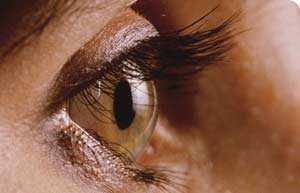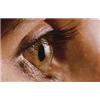
London: Patients who have lost part of their visual awareness following a stroke can show an improved ability to see when they are listening to music they like, according to a new study published today in the journal Proceedings of the National Academy of Sciences.
Every year, an estimated 150,000 people in the UK have a stroke. Up to 60% of stroke patients have impaired visual awareness of the outside world as a result, where they have trouble interacting with certain objects in the visual world.
This impaired visual awareness, known as ‘visual neglect’, is due to the damage that a stroke causes in brain areas that are critical for the integration of vision, attention and action. Visual neglect causes the patient to lose awareness of objects in the opposite side of space compared to the site of their brain injury.
If the stroke occurs in the right hemisphere of the brain, these patients tend to lose awareness of visual information in the left side of space. This occurs even though the area of the brain associated with sight is not damaged.
The researchers behind the study, from Imperial College London, the University of Birmingham and other institutions, suggest that listening to their favourite music may help stroke patients with impaired visual awareness to regain their ability to see.
The new study looked at three patients who had lost awareness of half of their field of vision as a result of a stroke. The patients completed tasks under three conditions: while listening to their preferred music, while listening to music they did not like and in silence. All three patients could identify coloured shapes and red lights in their depleted side of vision much more accurately while they were listening to their preferred music, compared with listening to music they did not like or silence.
For example, in one task, patients were asked to press a button when they could see a red light appear. One patient could point out the light in 65% of cases while he was listening to music he liked, but could only recognise the light in 15% of cases when there was no music or music he did not like being played.
The researchers believe that the improvement in visual awareness seen in these patients could be as a result of patients experiencing positive emotions when listening to music that they like. The team suggest that when a patient experiences positive emotions this may result in more efficient signalling in the brain. This may then improve the patient’s awareness by giving the brain more resources to process stimuli.
The team also used functional MRI scans to look at the way the brain functioned while the patients performed different tasks. They found that listening to pleasant music as the patients performed the visual tasks activated the brain in areas linked to positive emotional responses to stimuli. When the brain was activated in this way, the activation in emotion brain regions was coupled with the improvement of the patients’ awareness of the visual world.
Dr David Soto, the lead author of the study from the Division of Neurosciences and Mental Health at Imperial College London, said: “Visual neglect can be a very distressing condition for stroke patients. It has a big effect on their day-to-day lives. For example, in extreme cases, patients with visual neglect may eat only the food on the right side of their plate, or shave only half of their face, thus failing to react to certain objects in the environment”.
“We wanted to see if music would improve visual awareness in these patients by influencing the individual’s emotional state. Our results are very promising, although we would like to look at a much larger group of patients with visual neglect and with other neuropsychological impairments. Our findings suggest that we should think more carefully about the individual emotional factors in patients with visual neglect and in other neurological patients following a stroke. Music appears to improve awareness because of its positive emotional effect on the patient, so similar beneficial effects may also be gained by making the patient happy in other ways. This is something we are keen to investigate further,” added Dr Soto.
This research was funded by the British Academy, Biotechnology and Biological Sciences Research Council, Economic and Social Research Council, Medical Research Council and Stroke Association.
1. About Imperial College London
Consistently rated amongst the world’s best universities, Imperial College London is a science-based institution with a reputation for excellence in teaching and research that attracts 13,000 students and 6,000 staff of the highest international quality.
Innovative research at the College explores the interface between science, medicine, engineering and business, delivering practical solutions that improve quality of life and the environment – underpinned by a dynamic enterprise culture.
Since its foundation in 1907, Imperial’s contributions to society have included the discovery of penicillin, the development of holography and the foundations of fibre optics. This commitment to the application of research for the benefit of all continues today, with current focuses including interdisciplinary collaborations to improve health in the UK and globally, tackle climate change and develop clean and sustainable sources of energy.
Website: www.imperial.ac.uk




